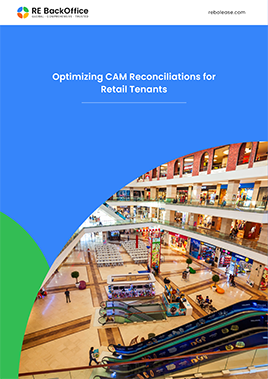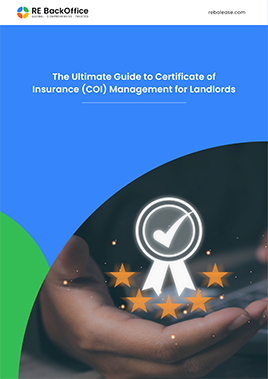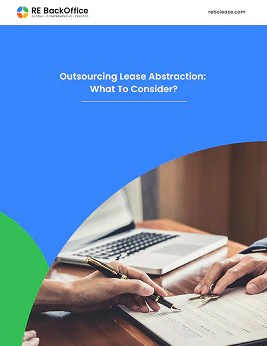
A lease is a legally binding contract between a landlord (the lessor) and a tenant (the lessee). The landlord is the property owner, while the tenant rents the property. Once both parties sign the lease, it becomes a formal legal document, enforceable in court. This necessitates a properly drafted lease document that details all terms agreed upon by both parties to avoid future disputes. In essence, a lease permits the tenant to use the landlord's property for a specific period in exchange for rent.
The Purpose of a Lease
The primary purpose of a lease is to delineate the responsibilities and obligations of both the landlord and the tenant. This document can be extensive, often exceeding 100 pages, particularly in commercial leases, which are generally more complex than residential leases. A lease will typically cover various aspects such as the duration of the lease, the amount of rent, responsibilities for repairs and maintenance, relocation terms, default clauses, and other essential details. The thoroughness of a lease ensures clarity and helps prevent disputes related to rent or other responsibilities.
Lease Abstraction
Lease abstraction is the process of summarizing lengthy lease documents into concise abstracts, usually spanning 2-3 pages. This task involves reviewing detailed lease agreements, extracting essential information, and creating a simplified version for easier reference. Lease abstraction is crucial for landlords managing multiple properties, as it allows them to quickly access key lease terms without wading through extensive documents. Given the complexity and length of legal lease language, professionals often outsource this task to experts who can distill the information effectively.
Lease abstraction is time-consuming and meticulous work. It involves summarizing critical financial and non-financial details found in the lease and its supporting documents. The resulting abstract serves as a valuable tool for quick reference and data exchange among various stakeholders.
Who Benefits from Lease Abstraction Services?
Beyond landlords and tenants, several other parties benefit from lease abstraction services:
Property Owners:
Owners gain a clear overview of their properties and rental agreements, facilitating easier management and decision-making. With a comprehensive lease abstract, property owners can efficiently monitor rent payments, lease expiration dates, and tenant obligations without sifting through lengthy documents.
Property Managers:
Appointed by landlords to oversee properties, property managers handle services like janitorial and security. Lease abstracts help them resolve lease-related queries and manage property maintenance and tenant issues effectively. For instance, if a tenant reports a maintenance issue, the property manager can quickly refer to the lease abstract to determine maintenance responsibilities.
Asset Managers:
These professionals focus on the financial aspects of properties, such as rent collection and market value assessment. Lease abstracts provide essential financial details that aid in smooth asset management. They use this information to optimize rent rates, evaluate property performance, and make strategic decisions to enhance asset value.
Lenders:
When lending money, lenders need security and assurance. Lease abstracts help them understand lease terms and assess risks, aiding in recovery processes if a borrower defaults. For example, knowing the lease's default clauses can help lenders plan how to reclaim their funds if necessary.
Investment Bankers:
They look for investment opportunities in properties or shopping centers. Lease abstracts help them evaluate the financial condition of properties for potential investment. Detailed financial terms, rent schedules, and tenant obligations provide investment bankers with a clear picture of a property's profitability and risk factors.
Accountants:
The financial details in lease abstracts assist accounting teams in managing property-related accounts efficiently. Lease abstracts streamline the accounting process by providing clear and concise financial information, making it easier to track income, expenses, and financial obligations.
Leasing and Property Brokers:
Brokers work with landlords and tenants to facilitate property rentals. Lease abstracts help them understand brokerage terms and identify opportunities for tenant renewals or new leases. By knowing when leases are about to expire, brokers can proactively seek new tenants or negotiate lease extensions, ensuring continuous occupancy and income for landlords.
Appraisers:
Appraisers evaluate property values. Lease abstracts provide essential details that help them in the appraisal process. Information such as rent amounts, lease duration, and tenant responsibilities influences a property's market value, enabling appraisers to make accurate valuations.
Law Firms:
In case of disputes between landlords and tenants, law firms rely on lease abstracts to understand terms and resolve conflicts effectively. Having a lease abstract allows legal professionals to quickly grasp key terms and obligations, facilitating faster resolution of legal disputes.
Consultants:
Real estate consultants provide expert advice to clients. Lease abstracts help them make informed recommendations regarding property purchases or developments. By analyzing lease abstracts, consultants can advise clients on property investments, development opportunities, and potential risks.
Key Parts of a Lease
A lease comprises several crucial components, each serving a specific purpose:
Landlord:
The lease should clearly identify the landlord's name and contact information. The landlord is responsible for maintaining the property, ensuring it is fit for purpose, and adhering to local laws and regulations.
Tenant:
The lease should state the tenant's name and the lease duration, indicating when the tenant's rights to the property will end. This information is crucial for both parties to understand the period of occupancy and renewal terms. Tenants are obligated to pay rent, maintain the property according to the lease terms, and comply with all applicable laws and regulations.
Lease Types
Understanding the lease type is crucial as it affects various terms and conditions:
- Retail Lease: Typically includes provisions for the operation of a retail business, common area maintenance fees, and rules about signage and store appearance.
- Office Lease: Focuses on office space use, including provisions for utilities, cleaning, and office hours.
- Industrial Lease: Covers warehouse or manufacturing space, with terms regarding heavy equipment use, safety regulations, and maintenance responsibilities.
- Residential Lease: Usually shorter in length and less complex, covering living arrangements, utilities, and basic maintenance responsibilities.
Rent
Rent is the financial cornerstone of the lease. It details:
- Amount: The specific rent amount and payment schedule.
- Escalations: Any increases in rent over time, based on factors like inflation or market rates.
- Penalties: Consequences for late payments.
- Deposits: Security deposits and conditions for their return.
- Adjustments: Provisions for rent adjustments based on property tax changes or other variables.
Clauses
Clauses cover non-financial obligations and define responsibilities:
- Maintenance: Who is responsible for maintaining different parts of the property.
- Insurance: Requirements for tenant and landlord insurance policies.
- Taxes: Responsibility for property taxes and any applicable fees.
- Subleasing: Conditions under which the tenant can sublease the property.
- Default: Actions to be taken if either party fails to meet their obligations.
Options
Options provide flexibility:
- Renewal: Conditions for extending the lease.
- Termination: Rights and conditions for early termination.
- Expansion/Reduction: Options to increase or decrease the leased space.
- Relocation: Terms under which the tenant can relocate within the property.
Renewals
Renewal options allow tenants to extend the lease term. Terms include:
- Notice Period: The time frame in which tenants must notify landlords of their intent to renew.
- New Rent Terms: Negotiation of rent for the renewal period.
- Additional Terms: Any changes or additional terms for the renewal period.
Supporting Documents
These include floor plans, site plans, property dimensions, and other supplementary materials that provide additional context and detail about the leased property. Supporting documents ensure both parties have a comprehensive understanding of the property's physical attributes and legal descriptions.
Understanding the intricacies of leases and the process of lease abstraction is essential for effective property management. Leases serve as comprehensive legal documents that protect the interests of both landlords and tenants by clearly outlining their responsibilities and obligations. Lease abstraction, though meticulous and time-consuming, provides a simplified and accessible version of these extensive documents, benefiting a wide range of stakeholders, from property owners and managers to lenders and law firms. Through lease abstraction, managing and understanding property leases becomes significantly more manageable, aiding in smoother operations and informed decision-making.


